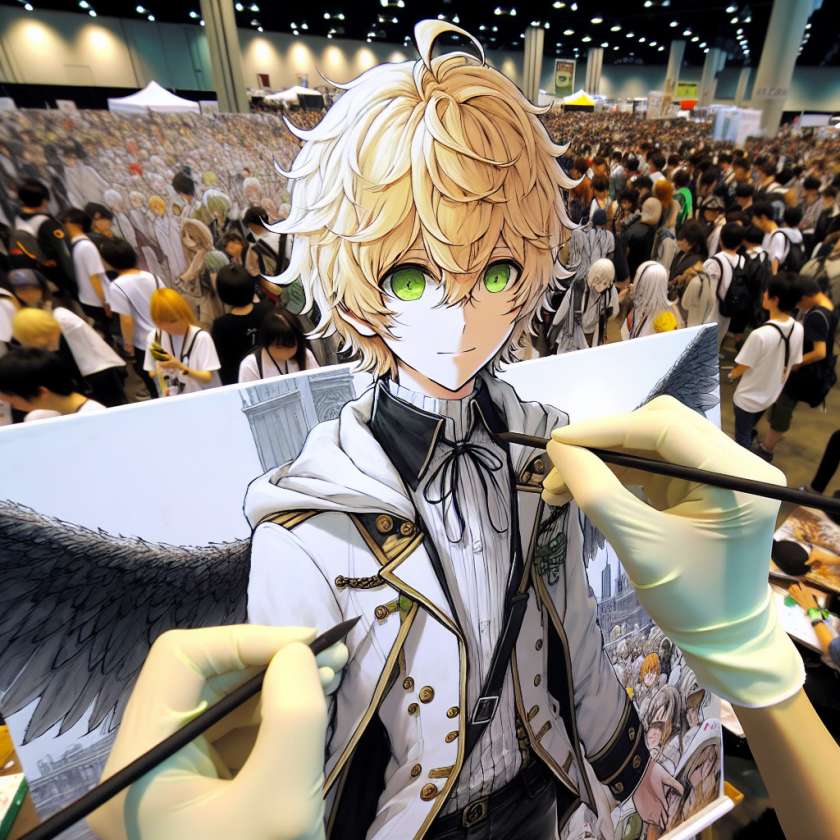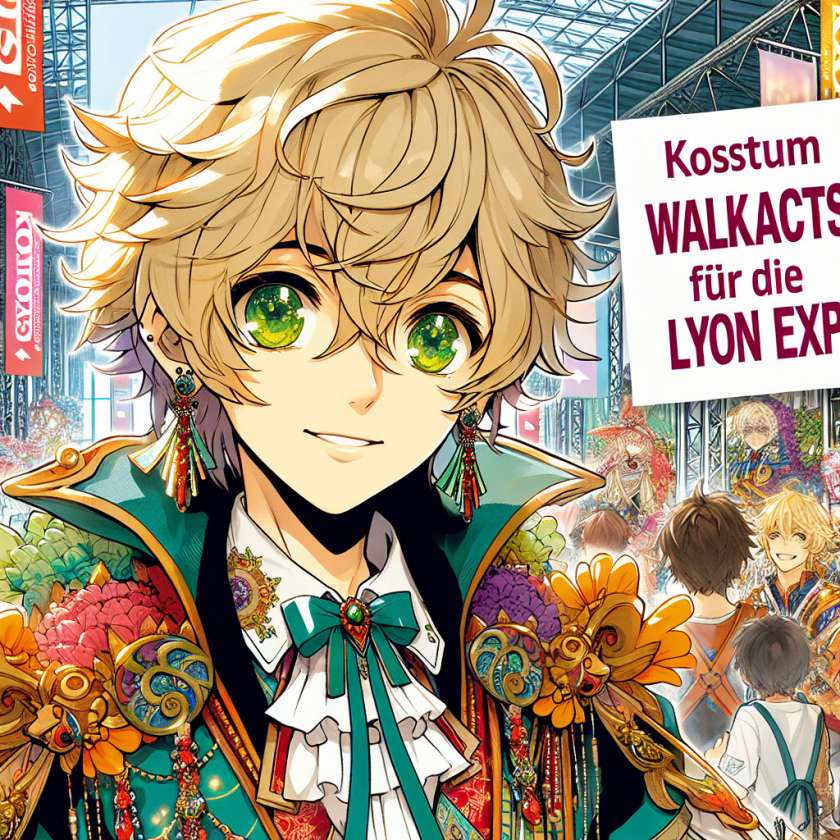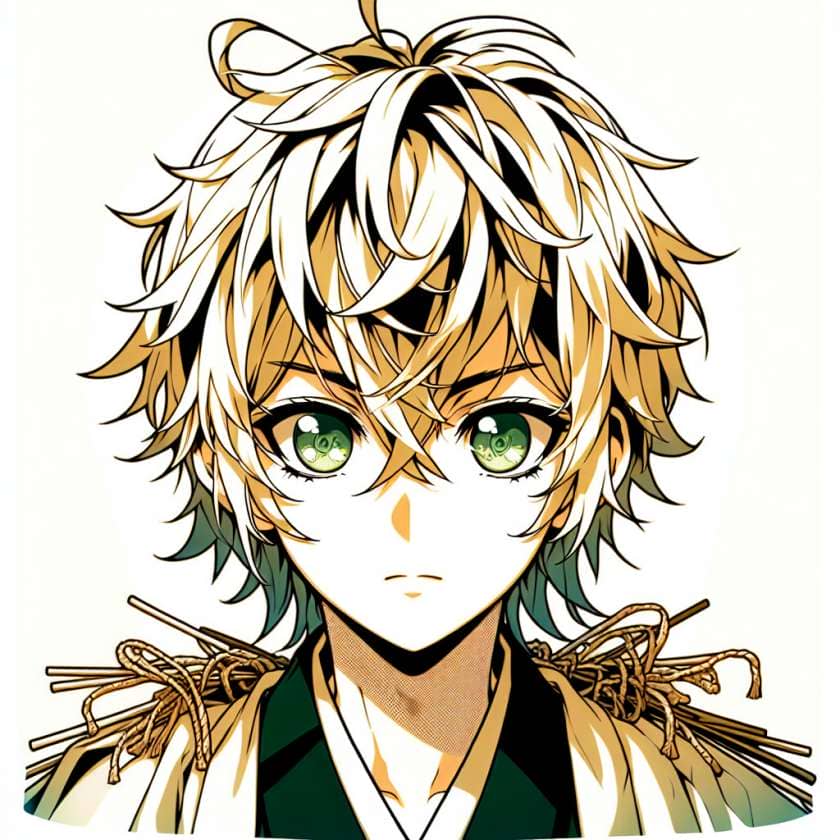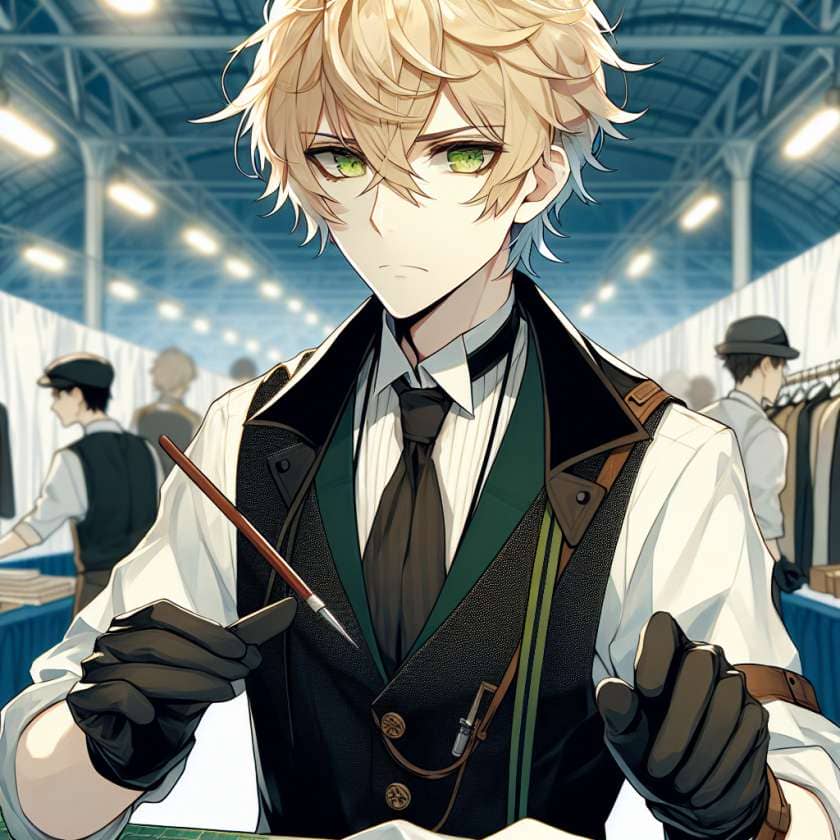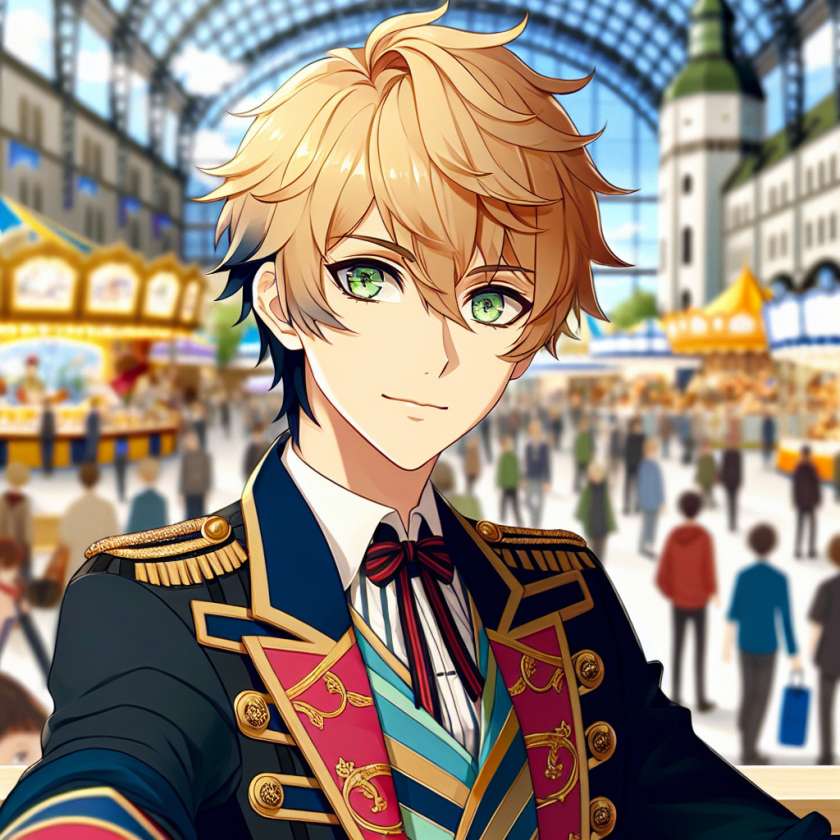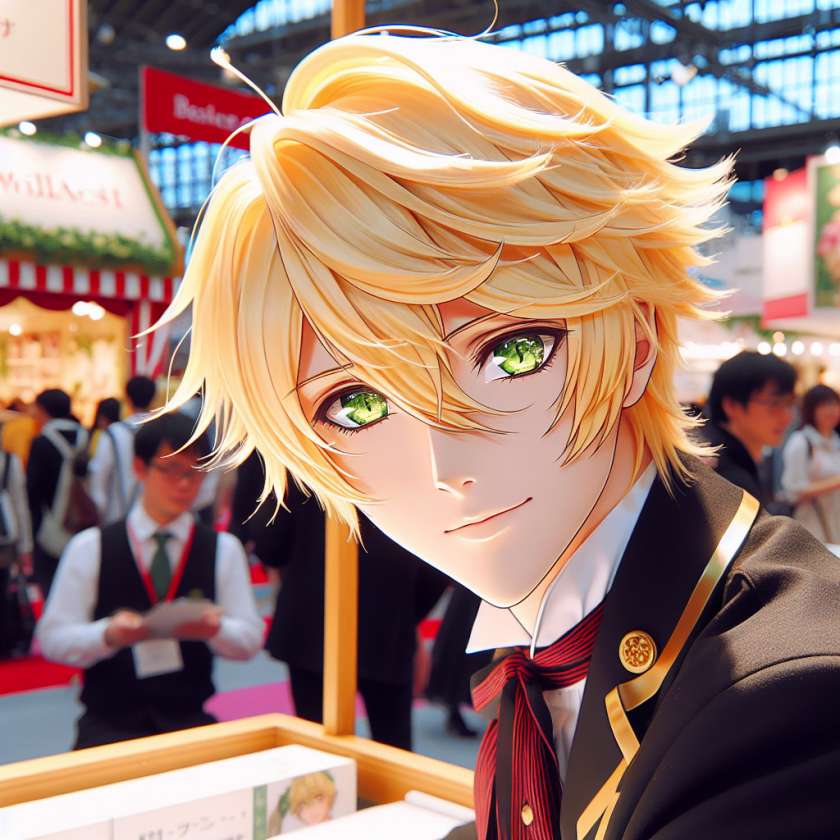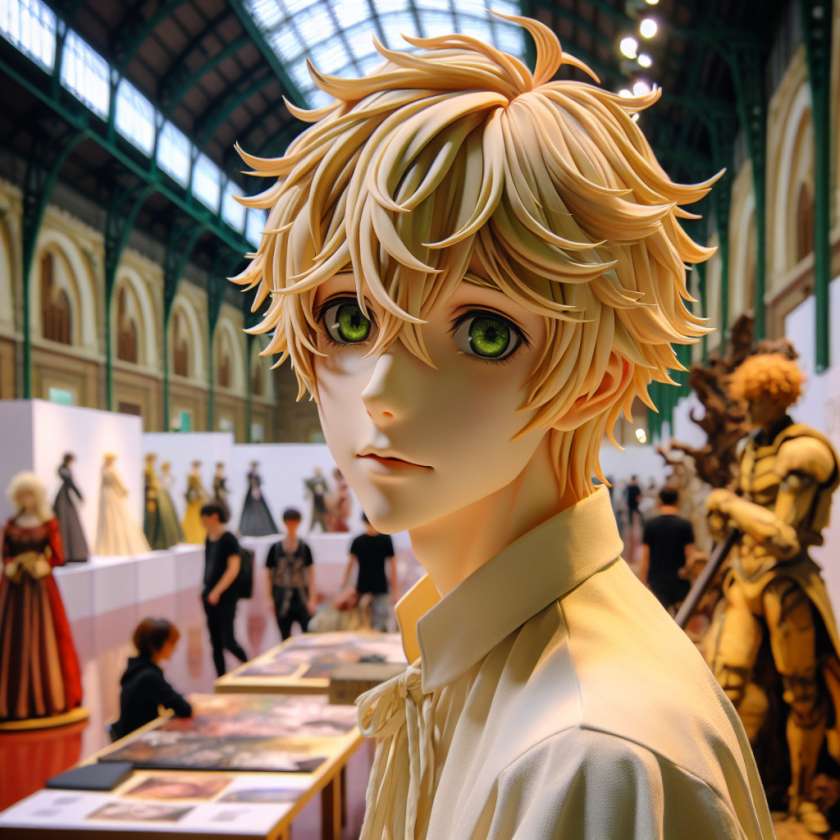https://images-wixmp-ed30a86b8c4ca887773594c2.wixmp.com/f/fa104328-c43e-4bd4-ab70-7911e23a1bd3/d1ga8pw-f834830e-342c-47ea-b904-ee0fefc9bdb5.jpg?token=eyJ0eXAiOiJKV1QiLCJhbGciOiJIUzI1NiJ9.eyJzdWIiOiJ1cm46YXBwOjdlMGQxODg5ODIyNjQzNzNhNWYwZDQxNWVhMGQyNmUwIiwiaXNzIjoidXJuOmFwcDo3ZTBkMTg4OTgyMjY0MzczYTVmMGQ0MTVlYTBkMjZlMCIsIm9iaiI6W1t7InBhdGgiOiJcL2ZcL2ZhMTA0MzI4LWM0M2UtNGJkNC1hYjcwLTc5MTFlMjNhMWJkM1wvZDFnYThwdy1mODM0ODMwZS0zNDJjLTQ3ZWEtYjkwNC1lZTBmZWZjOWJkYjUuanBnIn1dXSwiYXVkIjpbInVybjpzZXJ2aWNlOmZpbGUuZG93bmxvYWQiXX0.CsnSHVzksSWAvbn87Emh1QEQHGpvz-6x6rtB8q91ABA
[Sassy_Follow_Icons]
Essential Tools and Materials for Sewing a Cosplay
When it comes to sewing a cosplay, having the right tools and materials is essential. As a cosplayer, I have learned through trial and error what works best for me. Here are some of the must-have items in my sewing kit:
Sewing Machine:
- A reliable sewing machine is a must-have for any cosplayer. Look for one with adjustable stitch length and width settings, as well as multiple built-in stitches.
- I personally prefer using a computerized sewing machine because it offers more versatility and allows me to easily switch between different stitch patterns.
Cutting Tools:
- A good pair of fabric scissors is essential for cutting out pattern pieces accurately. Make sure to keep them sharp by only using them on fabric.
- In addition to fabric scissors, I also recommend investing in a rotary cutter and mat for cutting straight lines or long strips of fabric.
Measuring Tools:
- To ensure accurate measurements, you’ll need a flexible measuring tape. This will come in handy when taking body measurements or measuring fabric lengths.
- I also recommend having a clear ruler for measuring smaller details or marking seam allowances on patterns.
Pins and Needles:
- A variety of pins is crucial for holding fabric pieces together while sewing. I prefer using both regular straight pins and quilting pins with colorful heads that are easier to see.
- When it comes to needles, make sure you have different sizes depending on the type of fabric you’re working with. Ballpoint needles are great for knits, while sharp needles work well on woven fabrics.
Thread and Bobbins:
- Having a selection of thread colors is essential for matching your fabric. I recommend using high-quality polyester thread that is strong and durable.
- Don’t forget to wind extra bobbins with your chosen thread colors so you don’t have to constantly rethread your machine.
These are just a few of the essential tools and materials I always have on hand when sewing a cosplay. Having the right equipment not only makes the process easier but also ensures a professional-looking finished product.
Choosing the Right Fabric for Your Cosplay Project
Consider the Character and Design
When choosing fabric for your cosplay project, it’s important to consider the character you are cosplaying as well as the design of their outfit. Take note of the texture, color, and drape of the fabric used in the original design. Researching similar characters or designs can also give you ideas on suitable fabric choices.
[publishpress_authors_box layout="ppma_boxes_890427"]
Think About Comfort and Durability
While it’s important to stay true to the character’s outfit, don’t forget about comfort and durability. Consider whether you will be wearing the cosplay for long periods of time or participating in activities that may put strain on the fabric. Opt for fabrics that are breathable, lightweight, and can withstand movement without tearing or fraying easily.
Experiment with Different Fabrics
Don’t be afraid to experiment with different fabrics to achieve the desired look. For example, if your character has a metallic armor-like appearance, try using metallic spandex or pleather instead of traditional fabrics. Play around with textures like satin, silk, velvet, or even faux fur to add depth and interest to your cosplay.
Fabric Recommendations:
– Cotton: Ideal for everyday clothing pieces in cosplays.
– Spandex: Perfect for tight-fitting costumes that require stretch.
– Faux Leather: Great for creating a leather-like appearance without using real animal products.
– Organza: Adds a ethereal touch when used for capes or flowy elements.
– Worbla: A thermoplastic material commonly used for creating armor pieces.
Remember to always test fabrics before committing to them by making small samples or mock-ups to ensure they work well with your design and sewing techniques.
Tips:
– Consider washing instructions when selecting fabric to ensure it can be maintained properly.
– Take advantage of online fabric stores and cosplay communities for recommendations on specific fabrics for certain characters or designs.
– Don’t be afraid to mix and match fabrics to achieve the desired effect, such as using a combination of different materials for different parts of the costume.
Step-by-Step Instructions for Accurate Body Measurements in Cosplay
Why Accurate Body Measurements are Important
Accurate body measurements are crucial in cosplay because they ensure that the finished garment fits perfectly and looks professional. Taking precise measurements will help you avoid common fitting issues such as tightness, bagginess, or uneven proportions. It is essential to measure yourself or the person you are making the cosplay for before starting any sewing project.
Tools Needed for Taking Body Measurements
To take accurate body measurements, you will need a few essential tools. These include a flexible measuring tape, a mirror or someone to assist you, and a notepad and pen to record your measurements. It’s also helpful to wear form-fitting clothing while taking measurements to get the most accurate results.
Step-by-Step Guide to Taking Body Measurements
1. Start with the bust measurement: Wrap the measuring tape around the fullest part of your bust, ensuring it is parallel to the ground.
2. Move on to the waist measurement: Locate your natural waistline (the narrowest part of your torso) and wrap the measuring tape around it.
3. Measure your hips: Wrap the tape around the widest part of your hips, usually around 7-9 inches below your waist.
4. Take your inseam measurement: This is the length from your crotch to where you want the garment’s hemline to be.
5. Measure your arm length: Extend one arm outwards and measure from the top of your shoulder down to your wrist bone.
6. Finally, measure other specific areas if necessary, such as neck circumference, shoulder width, or thigh circumference.
Remember to keep the measuring tape snug but not too tight when taking measurements. Write down each measurement as you go along so that you can refer back to them later. Taking accurate body measurements will set the foundation for a well-fitted and comfortable cosplay garment.
Common Mistakes to Avoid When Taking Body Measurements
– Pulling the measuring tape too tightly, which can result in an overly tight garment.
– Not standing up straight or slouching, as this can lead to incorrect measurements.
– Measuring over bulky clothing, which can add extra inches and affect the fit of the final garment.
– Forgetting to measure both sides of the body if there are asymmetrical features that need to be accounted for.
By following these step-by-step instructions and avoiding common mistakes, you will be able to achieve accurate body measurements for your cosplay projects.
Tips for Pattern Selection and Alteration in Cosplay Sewing
Choosing the Right Pattern
When selecting a pattern for your cosplay project, it’s important to consider the character’s design and your own body shape. Look for patterns that closely resemble the desired costume, but also take into account any alterations you may need to make. For example, if the character has a unique neckline or sleeve style, choose a pattern that already has similar features to save time on alterations.
Considerations for Alterations
Once you have chosen a pattern, you may need to make adjustments to ensure a perfect fit. Common alterations include lengthening or shortening hems, adjusting waistlines, or modifying sleeves. To make these changes, it’s helpful to have basic knowledge of pattern grading and draping techniques. Additionally, consider using muslin fabric to create a mock-up of the costume before cutting into your final fabric.
– Take accurate body measurements before choosing a pattern.
– Compare your measurements with the pattern’s size chart.
– Consider using multiple patterns and combining elements from each for a custom look.
– Don’t be afraid to experiment with altering patterns it’s all part of the creative process.
Resources for Pattern Alteration
If you’re new to pattern alteration or need some guidance along the way, there are numerous resources available online and in books. Look for tutorials specifically tailored to cosplay sewing or general sewing techniques that can be applied to your project. Additionally, joining online communities or forums dedicated to cosplay can provide valuable advice and support from experienced cosplayers who have tackled similar challenges.
Some recommended resources include:
– Online tutorials on websites such as YouTube or Craftsy.
– Books on pattern alteration by renowned authors like Palmer/Pletsch.
– Sewing forums and communities like Cosplay.com or Reddit’s r/cosplay.
Remember, pattern selection and alteration are crucial steps in achieving a well-fitting and accurate cosplay costume. Take your time to research, plan, and practice before diving into your project.
Cutting Fabric Accurately Based on a Chosen Pattern
Preparing the Fabric
Before cutting your fabric, it’s essential to prepare it properly to ensure accurate and clean cuts. Start by washing and drying the fabric according to its care instructions. This step prevents any shrinkage or distortion that may occur later on. Ironing the fabric is also important as it removes wrinkles and makes it easier to work with.
Tools for Accurate Cutting
To achieve precise cuts, you’ll need some essential tools:
– Fabric scissors: Invest in a good pair of fabric scissors specifically designed for cutting textiles. Keep them sharp and dedicate them solely for fabric use.
– Rotary cutter: A rotary cutter is useful for cutting straight lines quickly. Use it with a cutting mat underneath to protect your work surface.
– Cutting mat: A self-healing cutting mat provides a smooth surface for rotary cutting while protecting your table or countertop.
– Clear ruler: A transparent ruler helps you measure accurately and align the pattern with the fabric.
The Cutting Process
Once your fabric is ready and you have all the necessary tools, follow these steps for accurate cutting:
1. Lay out the fabric on a flat surface, ensuring it is free from wrinkles or folds.
2. Place the pattern pieces on top of the fabric according to the layout guide provided in the pattern instructions.
3. Secure the pattern pieces onto the fabric using pins or weights.
4. Carefully trace around each pattern piece using tailor’s chalk or washable marker.
5. Remove the pattern pieces, ensuring not to disturb the marked lines.
6. Double-check that all markings are clear and visible.
7. Using fabric scissors or a rotary cutter, cut along the marked lines.
Remember to cut precisely and avoid any jagged or uneven edges. Take your time, especially when cutting intricate shapes or curves. It’s better to go slowly and ensure accuracy than rush through the process and end up with flawed pieces.
By following these tips and using the right tools, you’ll be able to cut your fabric accurately based on your chosen pattern, setting yourself up for success in the rest of your cosplay sewing project.
Different Types of Stitches in Cosplay Sewing and When to Use Them
Basic Stitches
Basic stitches are the foundation of any sewing project, including cosplay. These stitches include the straight stitch, backstitch, and running stitch. The straight stitch is used for most seams and hems, providing a secure and neat finish. The backstitch is stronger and more durable, making it ideal for areas that may experience tension or stress. The running stitch is a quick and easy stitch used for basting or gathering fabric.
Decorative Stitches
In cosplay, decorative stitches can add unique details to your costume. Some popular decorative stitches include the zigzag stitch, satin stitch, and applique stitch. The zigzag stitch is commonly used to finish raw edges or create decorative borders. The satin stitch creates a dense and smooth line of stitching, perfect for appliques or embroidery. The applique stitch is specifically designed to attach fabric shapes onto another fabric surface.
Tips:
- Practice different stitches on scrap fabric before using them on your cosplay garment.
- Consider using contrasting thread colors to make decorative stitches stand out.
- Adjust your machine’s tension settings if necessary to achieve the desired results with different stitches.
List of Different Stitches:
- Straight Stitch
- Backstitch
- Running Stitch
- Zigzag Stitch
- Satin Stitch
- Applique Stitch
Sewing Basic Seams and Hems in a Cosplay Garment
In cosplay sewing, understanding how to sew basic seams and hems is crucial for creating well-finished garments. Seams are the lines of stitching that join two or more fabric pieces together, while hems are the folded and stitched edges of a garment.
Types of Seams
There are several types of seams commonly used in cosplay sewing:
- Straight Seam: The most basic seam where two fabric edges are sewn together with a straight stitch.
- French Seam: A neat and enclosed seam often used for lightweight fabrics to prevent fraying.
- Flat-Felled Seam: A strong and durable seam commonly found in denim or heavy-duty costumes.
- Overlock Seam: Also known as a serged seam, it provides a clean finish and prevents fraying.
Hemming Techniques
Hemming refers to finishing the raw edge of a garment to create a clean and professional look. Some common hemming techniques include:
- Double Fold Hem: Folding the raw edge twice and stitching it down for stability.
- Blind Hem: Creating an almost invisible hem by using small, nearly invisible stitches on the right side of the fabric.
- Rolled Hem: Rolling the raw edge tightly and stitching it in place, often used for lightweight or sheer fabrics.
Tips:
- Press your seams and hems with an iron before sewing to ensure crisp results.
- Pinning or basting your fabric before sewing can help keep everything in place during the process.
List of Types of Seams:
- Straight Seam
- French Seam
- Flat-Felled Seam
- Overlock Seam
List of Hemming Techniques:
- Double Fold Hem
- Blind Hem
- Rolled Hem
Sewing Stretchy or Difficult Fabrics in Cosplay Projects: Techniques and Tips
Choosing the Right Needle and Thread
When working with stretchy or difficult fabrics, it’s important to use the correct needle and thread to ensure successful sewing. A ballpoint or stretch needle is ideal for fabrics like spandex or jersey, as it helps prevent skipped stitches and fabric damage. For more delicate fabrics such as silk or chiffon, a sharp needle is recommended. It’s also important to choose the appropriate thread – polyester thread works well for most fabrics, while cotton thread may be better suited for natural fibers.
Using Proper Stitching Techniques
Stitching techniques play a crucial role in sewing stretchy or difficult fabrics. Using a straight stitch with a slightly longer stitch length can help accommodate the fabric’s stretch without causing it to pucker. Backstitching at the beginning and end of each seam is essential to secure the stitches. Additionally, using a walking foot attachment on your sewing machine can help feed the fabric evenly and prevent stretching or distortion.
Tips for Sewing Difficult Fabrics:
- Use tissue paper under lightweight fabrics to prevent them from getting caught in the feed dogs.
- Consider using a stabilizer such as tear-away or wash-away stabilizer when working with delicate fabrics.
- If the fabric tends to curl at the edges, try using spray starch to temporarily stiffen it before sewing.
Tips for Sewing Stretchy Fabrics:
- Avoid stretching the fabric while sewing by gently guiding it through the machine.
- If you don’t have a walking foot attachment, place tissue paper between layers of stretchy fabric to help prevent stretching during sewing.
Effectively Adding Closures to a Cosplay Outfit: Zippers, Buttons, etc.
Choosing the Right Closure
When it comes to adding closures to a cosplay outfit, it is important to choose the right type of closure that not only matches the design aesthetic but also provides functionality. Zippers are commonly used for closures in cosplay as they are easy to install and provide a secure closure. However, buttons can also be a great option for certain cosplay designs, especially if you want to achieve a more vintage or intricate look.
Tips for Installing Zippers
Installing zippers on a cosplay outfit can seem daunting, but with some practice and attention to detail, it can be easily accomplished. Here are some tips for effectively adding zippers:
1. Choose the appropriate zipper length: Measure the area where the zipper will be placed and select a zipper that is slightly longer than that measurement.
2. Mark and baste: Before sewing the zipper permanently, mark the placement on your fabric using tailor’s chalk or pins. Baste the zipper in place first to ensure proper alignment before sewing.
3. Use a zipper foot: When sewing close to the teeth of the zipper, switch to a zipper foot on your sewing machine. This will allow you to sew closer to the teeth without damaging them.
4. Secure the ends: To prevent the ends of your zipper from unraveling over time, stitch across each end of the zipper tape multiple times.
Tips for Sewing Buttons
Buttons can add unique details and accents to your cosplay outfit. Here are some tips for sewing buttons effectively:
1. Choose suitable buttons: Consider both size and style when selecting buttons for your cosplay outfit. Ensure that they complement the overall design and theme.
2. Reinforce buttonholes: To prevent fraying or stretching of buttonholes over time, reinforce them with interfacing or a narrow strip of fabric before sewing the buttons in place.
3. Sew securely: Use a strong thread and sew buttons securely by stitching through multiple times. This will ensure that the buttons stay in place even during vigorous movements while wearing the cosplay outfit.
4. Add decorative touches: For added visual interest, consider using contrasting thread or adding small embellishments around the buttons, such as beads or embroidery stitches.
By carefully selecting and properly installing closures like zippers and buttons, you can enhance both the functionality and aesthetic appeal of your cosplay outfit.
Adding Decorative Details to a Cosplay Costume: Appliques, Embroidery, etc.
Choosing the Right Decorative Technique
When it comes to adding decorative details to a cosplay costume, there are various techniques you can use to achieve stunning results. Some popular options include appliques, embroidery, fabric painting, and trimmings. Choosing the right technique depends on factors such as the desired effect, complexity of the design, and personal preferences.
Appliques
Appliques are pre-made fabric patches that can be attached to a garment using various methods such as hand-sewing or fusible webbing. They come in different shapes, sizes, and designs and can add intricate patterns or images to your cosplay costume.
– Selecting appliques: Look for appliques that match your cosplay theme or character. Consider their size and placement on your costume for optimal visual impact.
– Attaching appliques: Hand-sewing is often recommended for attaching appliques as it provides more control over placement and ensures secure attachment. Use small whip stitches along the edges of the applique for an invisible finish.
– Embellishing appliques: To make your appliques stand out even more, consider adding additional details such as sequins, beads, or embroidery stitches.
Embroidery
Embroidery is a versatile decorative technique that involves stitching designs onto fabric using various types of stitches and threads. It can add texture, dimension, and intricate details to your cosplay costume.
– Choosing embroidery designs: Select embroidery designs that complement your cosplay character or theme. Consider the size and complexity of the design to ensure it fits well on your costume.
– Transferring designs: Use transfer paper or a water-soluble pen to transfer the embroidery design onto your fabric before stitching.
– Stitching techniques: Experiment with different embroidery stitches such as satin stitch, backstitch, or French knots to achieve different effects. Practice on scrap fabric before working on your costume to ensure accuracy and consistency.
By incorporating decorative techniques like appliques and embroidery into your cosplay costume, you can elevate its visual appeal and capture the essence of your character more effectively.
Sewing Techniques for Creating Armor or Props in Cosplays: Special Considerations
When it comes to sewing armor or props for cosplays, there are a few special considerations to keep in mind. Firstly, it’s important to choose the right materials for the job. Opt for fabrics that have some structure and can hold their shape well, such as EVA foam or Worbla. These materials can be easily sewn onto garments and molded into various shapes.
Another important aspect is understanding the construction techniques specific to armor or prop making. This may involve using heat guns or specialized adhesives to join pieces together before sewing them onto the garment. Additionally, consider adding extra reinforcement with stitching or rivets in areas that will experience more stress.
Choosing the Right Thread and Needles
When working with armor or props, it’s crucial to select the appropriate thread and needles. Use heavy-duty threads that can withstand the weight of the materials being used. Nylon threads are a popular choice due to their strength and durability. As for needles, opt for thicker ones that won’t break easily when sewing through tough materials like EVA foam.
Working with EVA Foam
EVA foam is a versatile material commonly used in cosplay armor and prop making. To sew EVA foam, it’s essential to use a hot knife or heat source to melt holes along the edges where you want to sew. This creates clean entry points for your needle and prevents fraying.
Once you’ve melted your holes, use a curved needle specifically designed for working with thick materials like EVA foam. This type of needle allows you to sew through multiple layers without straining your hands.
- Choose fabrics with good structure
- Learn specialized construction techniques
- Reinforce stress points with stitching or rivets
- Use heavy-duty thread and thicker needles
- Melt holes in EVA foam with a hot knife
- Use curved needles for sewing through thick materials
Neatly Finishing Raw Edges in a Cosplay Garment without Serging Equipment
Not everyone has access to serging equipment, but that doesn’t mean you can’t achieve clean and finished edges in your cosplay garments. There are several alternative methods you can use to neatly finish raw edges.
Zigzag Stitching
A zigzag stitch is a common technique used to prevent fraying and give a clean edge appearance. Set your sewing machine to the zigzag stitch option and adjust the stitch width and length according to your preference. Sew along the raw edge, making sure the zigzag stitches catch the fabric’s edge.
French Seams for Delicate Fabrics
If you’re working with delicate fabrics like silk or chiffon, French seams provide an elegant finishing touch. To create a French seam, sew the wrong sides of the fabric together with a narrow seam allowance. Trim the seam allowance down, press it flat, and then fold the fabric so that the right sides are facing each other. Sew along this folded edge to encase the raw edge completely.
- Use zigzag stitching for preventing fraying
- Adjust stitch width and length according to preference
- Create French seams for delicate fabrics like silk or chiffon
- Sew wrong sides together with narrow seam allowance
- Trim seam allowance, press flat, and fold fabric to encase raw edge
Ensuring Proper Fitting and Making Adjustments during the Sewing Process for a Perfect Cosplay Outcome
Proper fitting is essential for achieving a perfect cosplay outcome. Here are some tips to ensure your garment fits well:
Take Accurate Measurements
Before starting your sewing project, take accurate measurements of your body or the person you’re making the cosplay for. Use a measuring tape and follow a measurement guide to record all necessary dimensions. This will help you choose the correct pattern size and make any necessary adjustments.
Making Test Garments or Muslins
To avoid wasting expensive fabric, consider making a test garment or muslin using inexpensive materials like muslin fabric. This allows you to check the fit, make any necessary adjustments, and perfect the pattern before cutting into your final fabric.
- Take accurate body measurements with a measuring tape
- Create test garments or muslins using inexpensive materials
- Check fit and make adjustments before cutting final fabric
- Use pins or basting stitches to temporarily adjust fit during sewing process
- Tailor seams as needed for better fitting
Adding Linings or Interfacings to Enhance Structure and Durability in a Cosplay Outfit
Lining and interfacing can greatly enhance the structure and durability of a cosplay outfit. Here’s how to incorporate them effectively:
Lining for Comfort and Professional Finish
Add lining to garments that will be in direct contact with your skin for added comfort. Lining can also provide a professional finish by hiding raw edges and seams. Choose lining fabrics that are lightweight, breathable, and have a similar stretch or drape to your main fabric.
Interfacing for Added Structure
If you want your cosplay outfit to have more structure, consider using interfacing. Interfacing is a material that adds stiffness and support to specific areas of a garment. It can be applied to collars, cuffs, or any other part that requires extra stability. Choose interfacing based on the weight and type of fabric you’re working with.
- Add lining for comfort and professional finish
- Choose lightweight and breathable lining fabrics
- Use interfacing for added structure in specific areas
- Select appropriate interfacing based on fabric weight and type
- Fuse or sew interfacing onto desired areas before assembling the garment
Tips and Tricks for Beginners to Achieve Professional-Looking Results when Sewing their First Cosplay
Sewing your first cosplay can be intimidating, but with these tips and tricks, you’ll be able to achieve professional-looking results:
Start with Simple Designs
As a beginner, it’s best to start with simpler designs that don’t involve complex patterns or techniques. This allows you to focus on mastering basic sewing skills while still creating an impressive cosplay.
Practice on Scrap Fabric First
Before diving into your actual cosplay fabric, practice different stitches and techniques on scrap fabric. This will help build your confidence and ensure you’re comfortable with the sewing machine settings before working on your final project.
- Begin with simpler designs that don’t involve complex patterns or techniques
- Focus on mastering basic sewing skills first
- Practice stitches and techniques on scrap fabric before using final fabric
- Experiment with different seam finishes to find the one that suits your cosplay best
- Take your time, be patient, and don’t be afraid to ask for help or seek tutorials
In conclusion, learning how to sew a cosplay can be an exciting and rewarding experience for any enthusiast. By following the steps and tips mentioned in this guide, you’ll be well on your way to creating your own unique costumes. However, if you find yourself short on time or prefer a professional touch, don’t forget to check out our cosplay services! We’d love to help bring your favorite characters to life with our expertise and passion. Happy sewing!
https://images-wixmp-ed30a86b8c4ca887773594c2.wixmp.com/f/6b2aa7d3-527e-40cf-be0a-713c052643a3/d8resqn-bc98bd98-072f-4e77-82a3-d27f3df0d92e.jpg?token=eyJ0eXAiOiJKV1QiLCJhbGciOiJIUzI1NiJ9.eyJzdWIiOiJ1cm46YXBwOjdlMGQxODg5ODIyNjQzNzNhNWYwZDQxNWVhMGQyNmUwIiwiaXNzIjoidXJuOmFwcDo3ZTBkMTg4OTgyMjY0MzczYTVmMGQ0MTVlYTBkMjZlMCIsIm9iaiI6W1t7InBhdGgiOiJcL2ZcLzZiMmFhN2QzLTUyN2UtNDBjZi1iZTBhLTcxM2MwNTI2NDNhM1wvZDhyZXNxbi1iYzk4YmQ5OC0wNzJmLTRlNzctODJhMy1kMjdmM2RmMGQ5MmUuanBnIn1dXSwiYXVkIjpbInVybjpzZXJ2aWNlOmZpbGUuZG93bmxvYWQiXX0.V-1ASTUlEEmbeCZMC5uy1zHdXp6URNRDaQlI8qnKiMI


